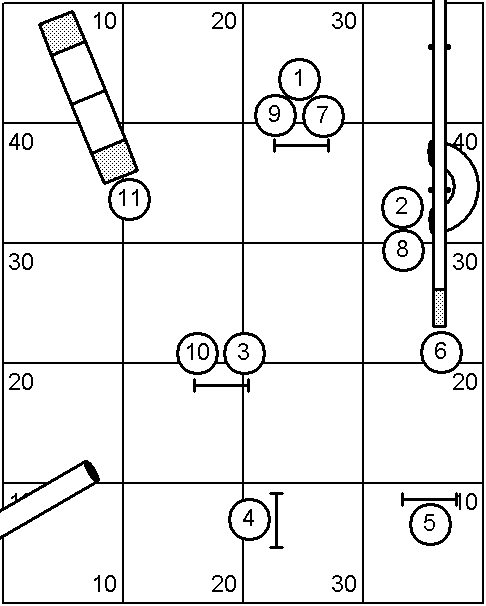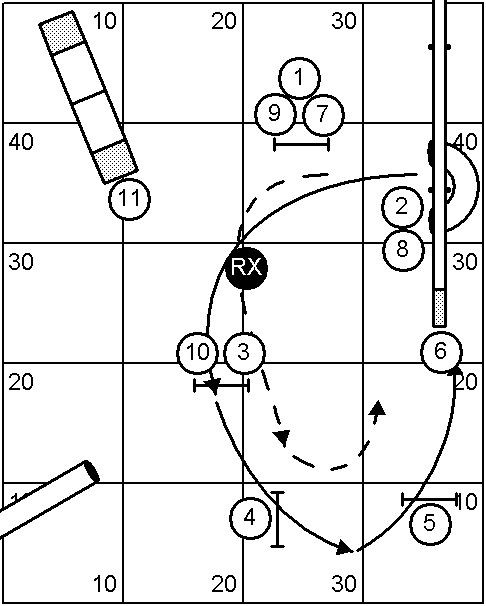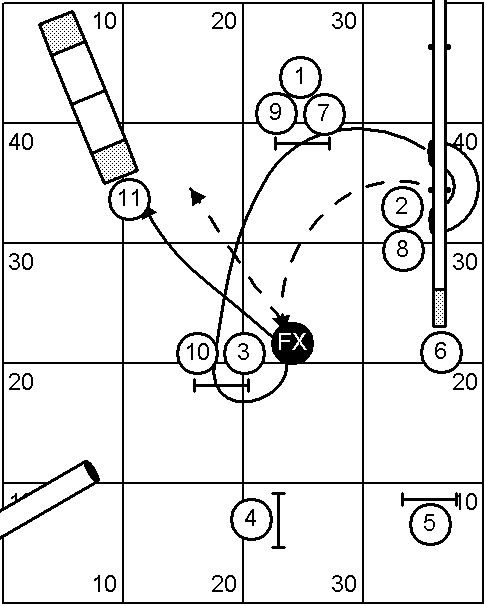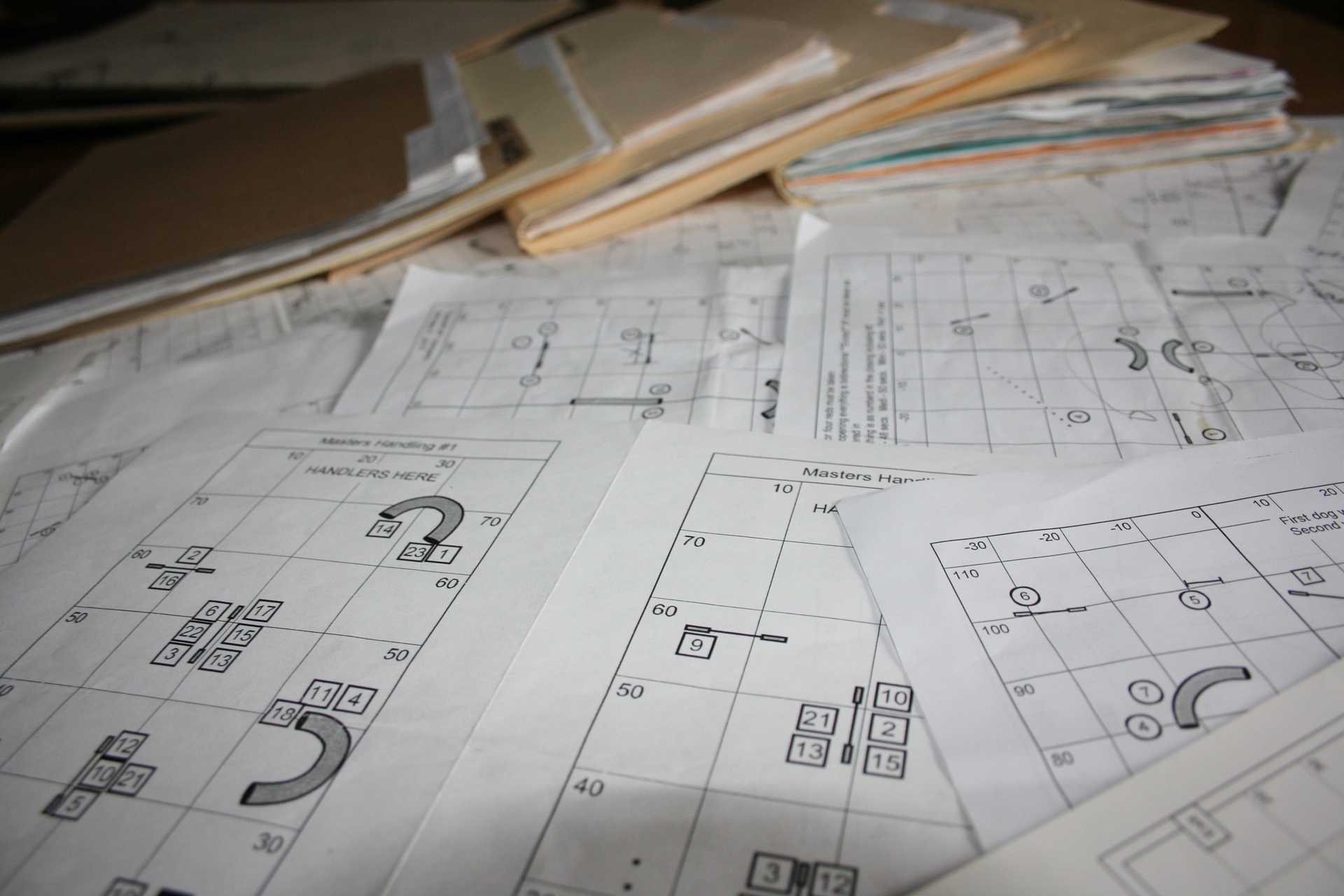Dana Pike Advanced Class Course
12 Oct 2004
Dana has a knack for creating training sequences that allow multiple interesting handling approaches as well as looking deceptively simple. This past Wednesday night was a good example. I've cut down the course and changed some numbering to focus on the section in which I am most interested. At first glance the only challenging aspect of the distorted Pin Wheel is the off course to the tunnel the dogs see both times when taking jump 3/10.
My first instinct was to handle the Pin Wheel by getting in the center and pulling the dog around the jumps on my right. I ran this course with Mr. Peabody who doesn’t tear up the course so I was able to be with him throughout the sequence. But students with fast dogs using this handling approach encountered a number of problems. I think the speed of the dogs coming out of the tunnel and running over the long distance to the jump was the primary cause of problems. I’ve highlighted the problem dog paths with lettered circles below:

Problems encountered:
- Taking the off-course tunnel
This was due to handlers getting behind their dog or those who didn't get their dog turned towards the next jump. Arm flipping while turning also pushed a dog into the tunnel. - Dog turning back to handler after jump 3
This was due to handlers being behind their dogs and/or hard yanks on the Verbal Leash to avoid the off course tunnel - Dog turning back to handler after jump 4
This was a little more unexpected. Dana reminded us to take the dog's view when coming over jump 4. With jump 5 exactly perpendicular to jump 4 the dog may not see jump 5 depending on their path. A path that turned the dog significantly before jump 4 together with a handler that didn't step into the turn to jump 5 caused this problem. - Dog running past jump 5
This was due to the same flat approach as the previous problem but with the handler not signalling the turn to jump 5 or pushing the dog around jump 5 with an extended arm.
All of these problems were easily fixed. Getting the dog turned slightly prior to taking jump 3 so they take jump 4 at an angle towards jump 5 gives the dog a clear view of jump 5 as they turn back towards the handler. This path will be shown below with a different handling.
Dana proposed a different handling that almost assures the successful path I described. By picking up the dog on the handler’s left coming out of the tunnel and then Rear Crossing Learning the Rear CrossRear Cross, the dog is turned away from the tunnel and setup on a line that takes them over jump 4 at an angle. The dog then naturally turns back towards the handler (and the only visible obstacle) and takes jump 5. This path is shown below:

The next sequence of interest was from jump 8 through to the A Frame. This amounts to basically deciding which direction to wrap the dog around jump 10. The complication was getting the dog over jump 9 before hand tended to put the handler behind the dog as a Front Cross Learning the Front Cross - VideoFront Cross over the jump was awkward.
A number of us used a Rear Cross to change the dog’s Lead before the jump. I think primarily because it appeared to be the shortest distance to the A Frame. It was difficult to get the dog to turn enough towards the handler to get them to actually make the lead change, especially since the handler was pushing on the dog’s line to get to the A Frame. So some dogs changed their lead after the jump. Consequently, this plan caused a few of the dogs to take the off course tunnel. This path is shown below:

Dana pointed out that we could keep the dog on the same lead leg and by cueing a short stride over the jump just Front Cross the dog over the jump. It was a little more yardage but it gave the dog a better line to the A Frame without the off course potential:

This was a fun sequence that I’ll have to setup again. Thanks Dana!
If you enjoyed this article won't you please:  Thanks!
Thanks!
